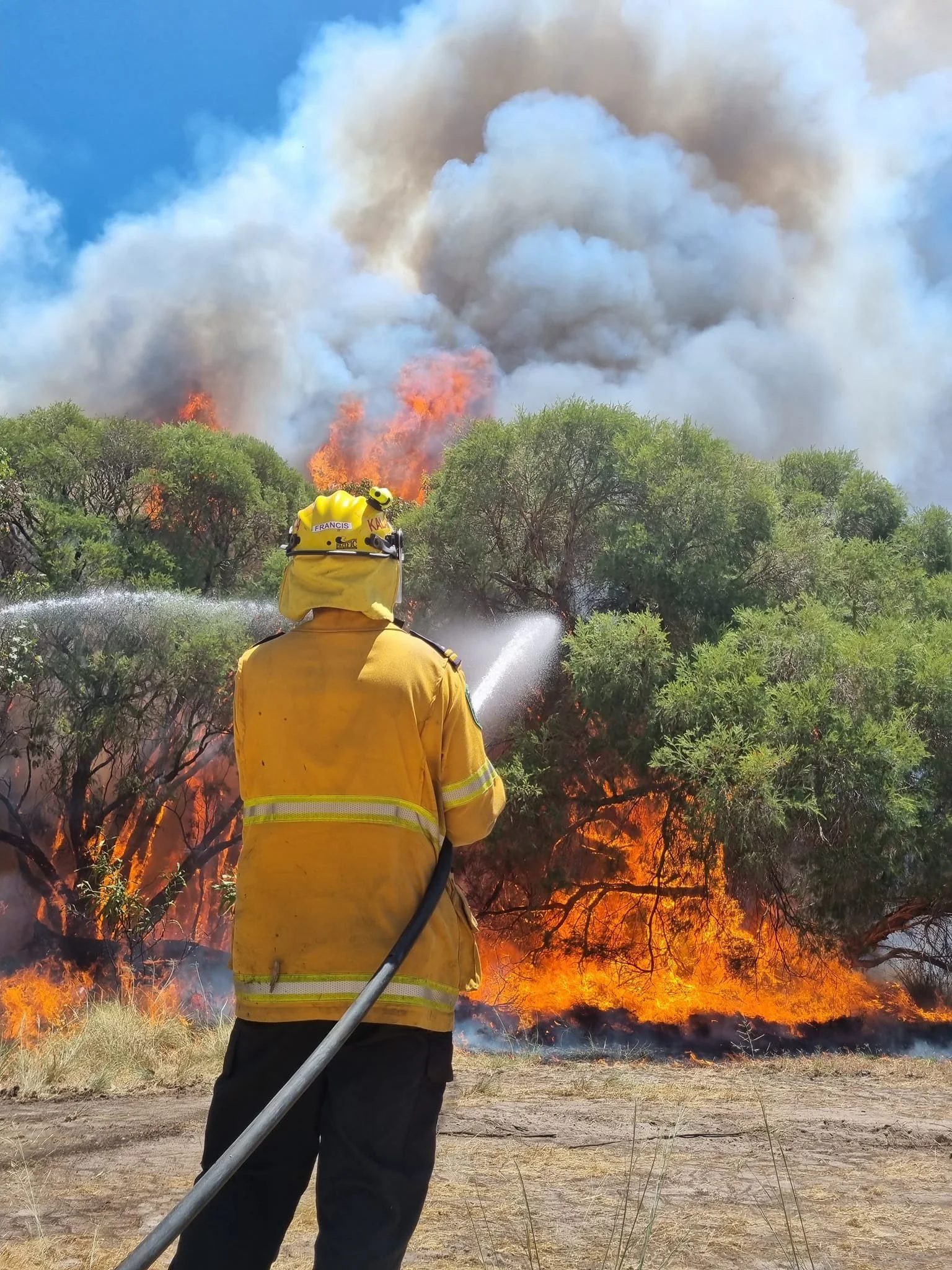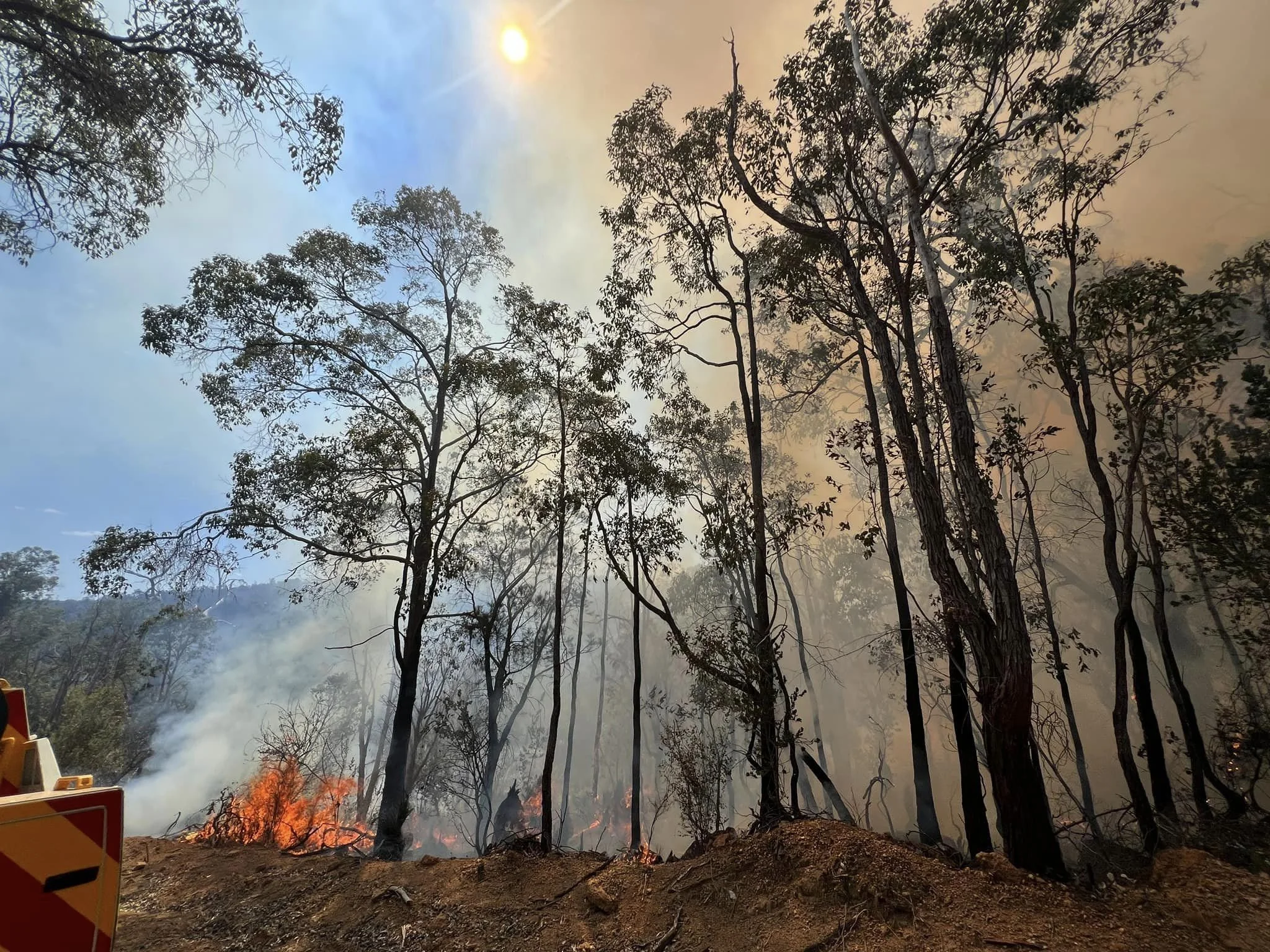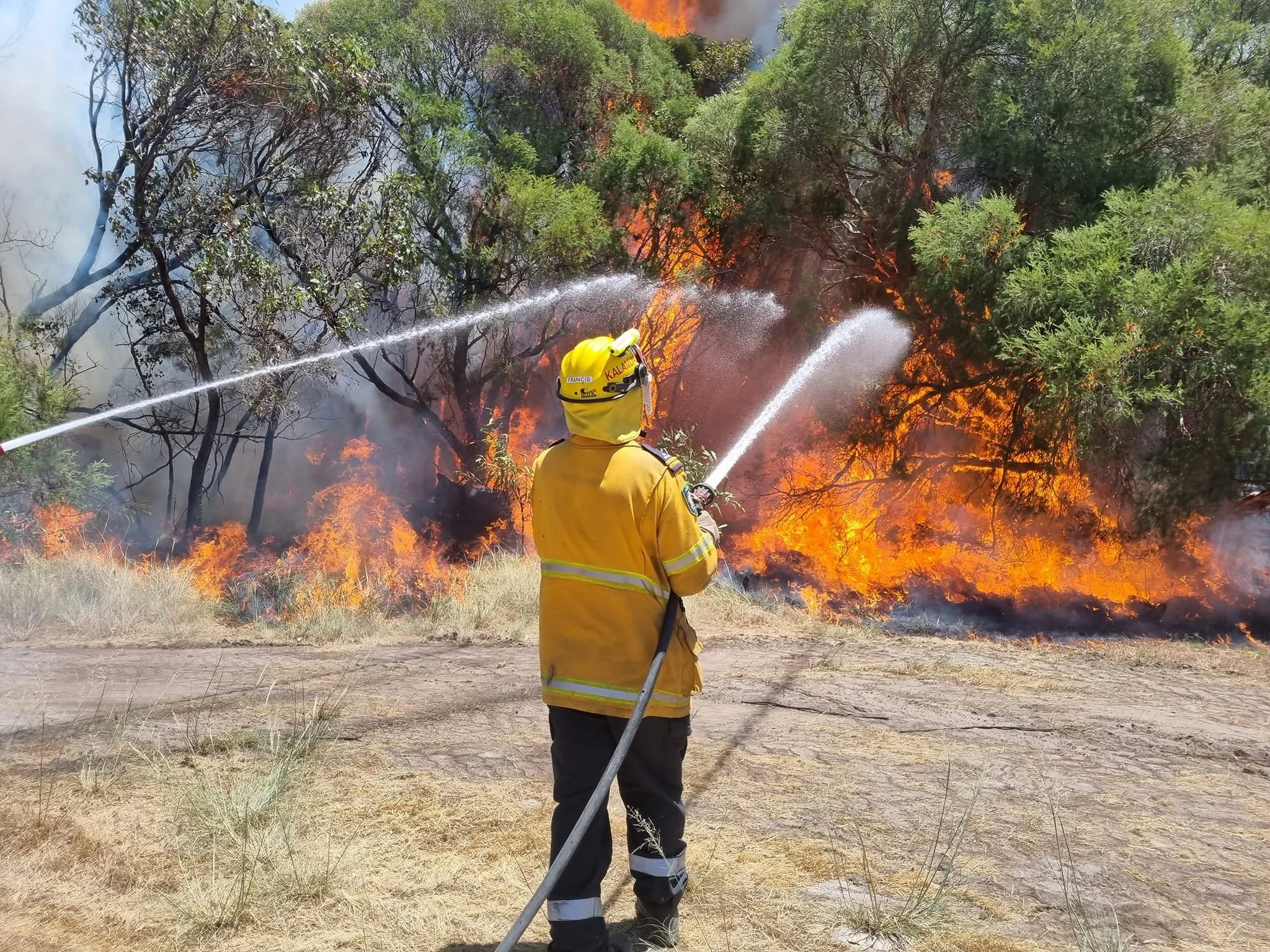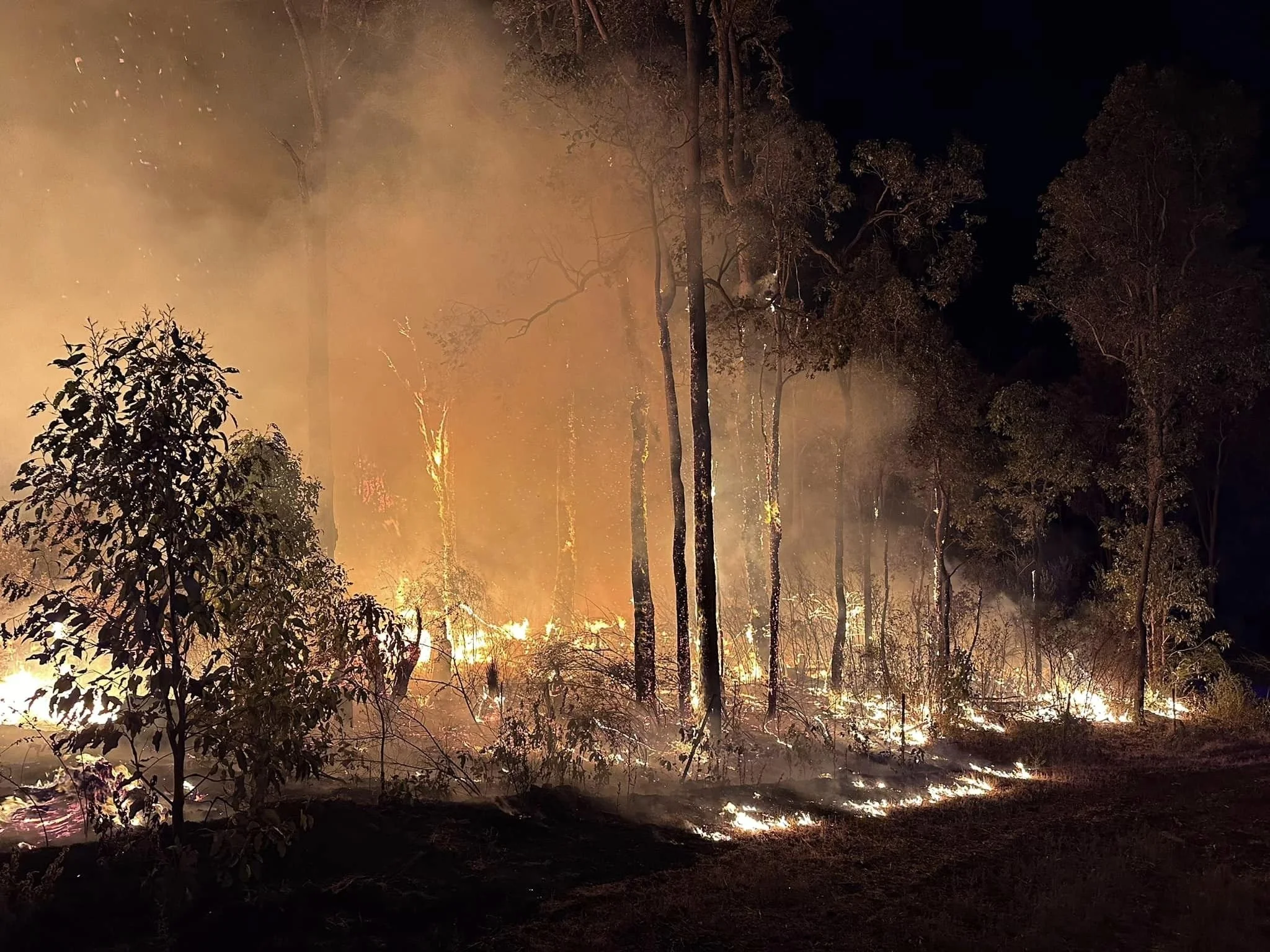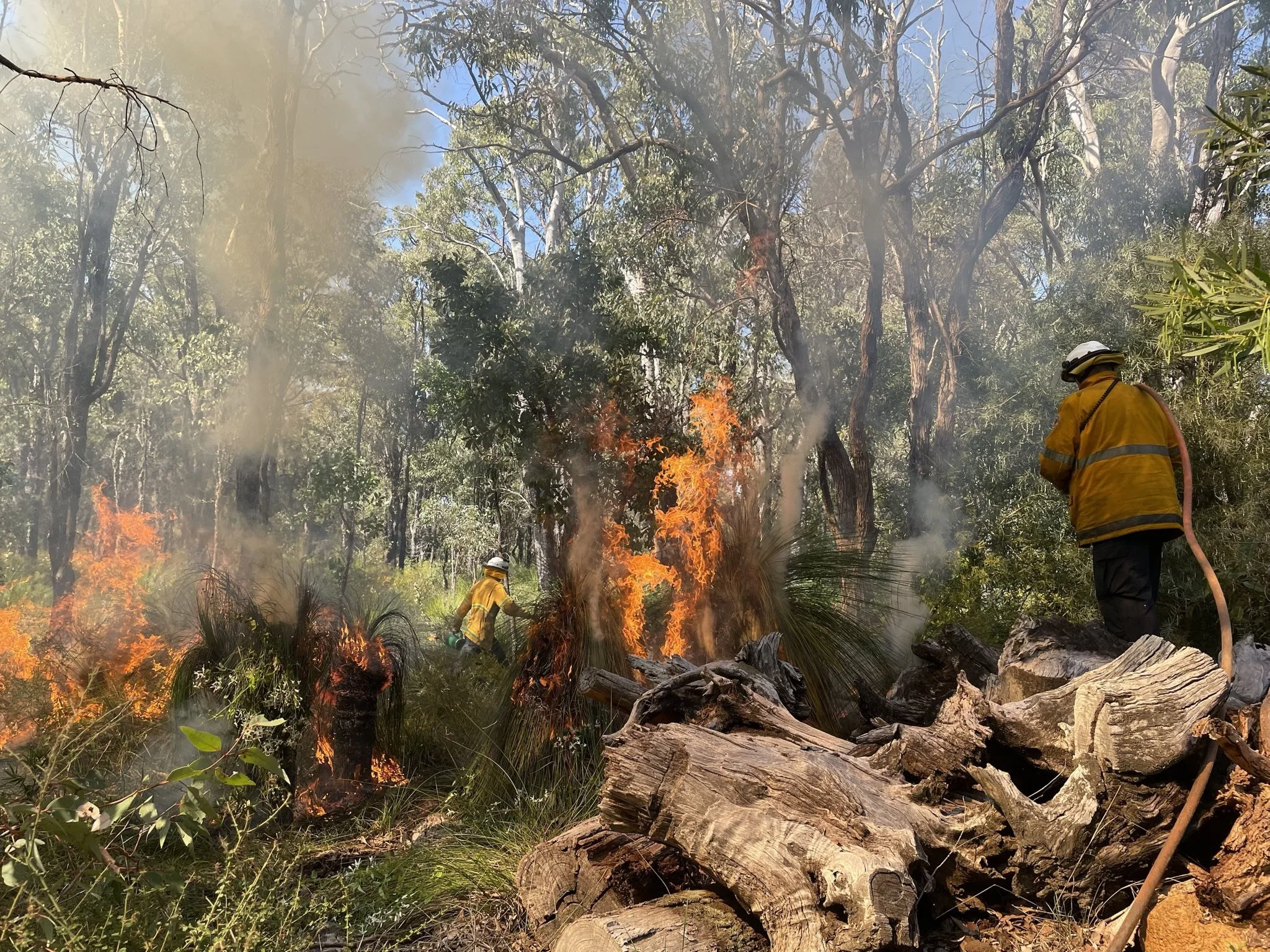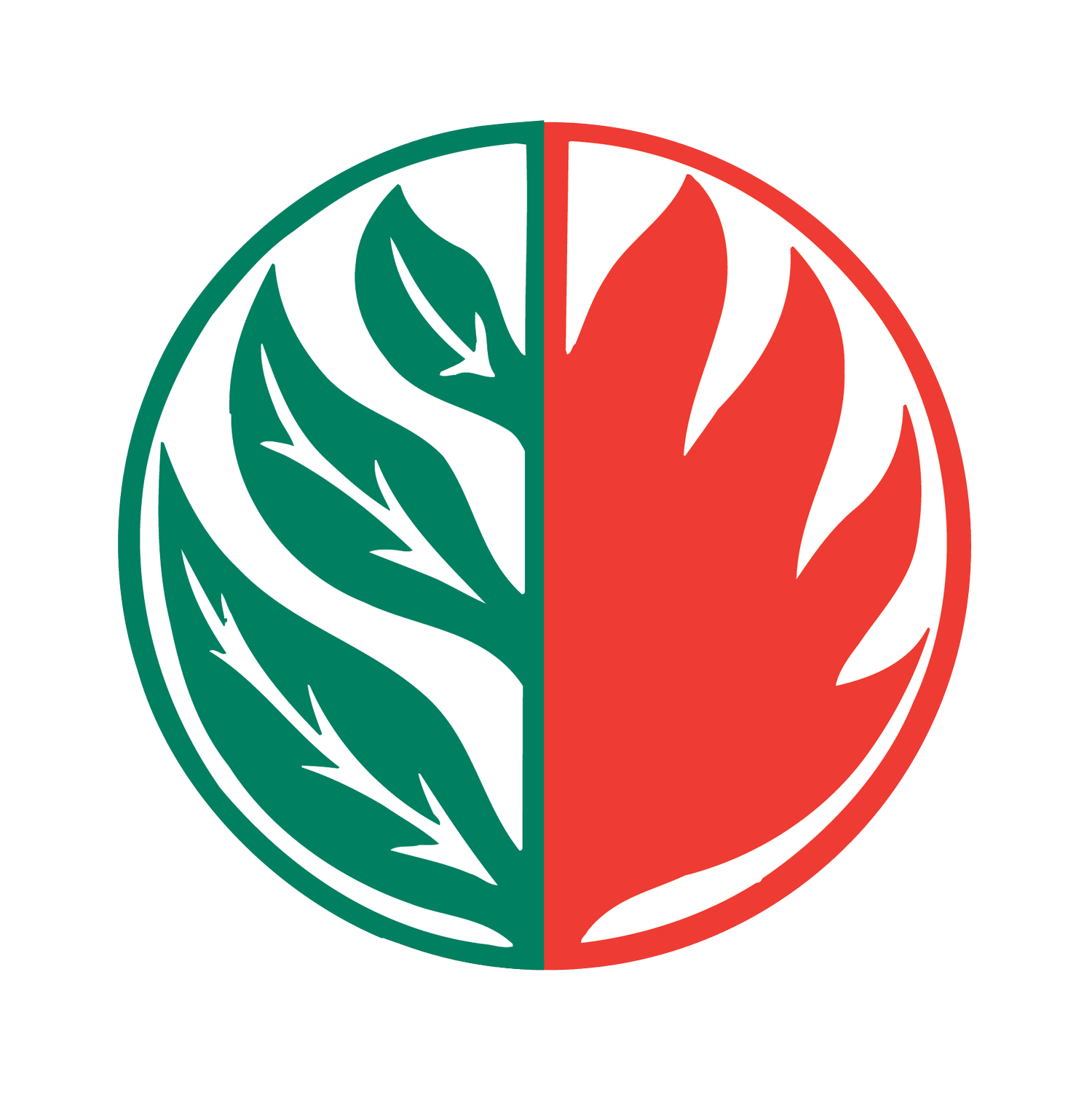
KALAMUNDA VOLUNTEER BUSHFIRE BRIGADe
The City of Kalamunda brigades (Kalamunda Volunteer Bush Fire Brigade and Piesse Brook Volunteer Bushfire Brigade) collectively have approximately 90 members and are a vibrant part of the community of Kalamunda, responding to fires in its fleet of six frontline fire appliances and two support vehicles. The Brigades are wholly run by a dedicated team of volunteer officers, with support from City of Kalamunda employees. These officers regularly put in over 25 hours work per week behind the scenes, to keep the Brigades running. Training and safety standards are best practice and the Brigades are justifiably proud of their position in the community and the service they provide.
BRIGADe History
There has been at least one Volunteer Bush Fire Brigade in the City of Kalamunda since at least the 1920s. Records from this time are very sketchy but each of the small localities that later came to comprise the City appears to have had a loosely organised Bush Fire Brigade. In those days the City comprised a loose collection of small settlements, each settled within and surrounded by bush. Each of these settlements had to rely on their own efforts to protect themselves from the threat of fire. There may have been as many as 15 different Bushfire Brigades working within these scattered settlements. The early Brigades were very different from what we have today; they may have been organised around one or two people without any real equipment other than rakes, shovels, tree branches and maybe occasionally, a knapsack spray unit.
In 1954 the government passed the Bushfires Act and the City reorganised these Brigades. They were gazetted under the Act, given some powers and provided with the authority to fight fires legally. Ostensibly each brigade had a gazetted Fire Control Officer who legally had the right to order people to extinguish fires, issue permits, command Brigades at incidents etc. In reality some of the ‘Brigades’ consisted only of this Fire Control Officer, who organised locals to fight fires as required. However, at least some of the Brigades began to get more serious and better organised. This ‘seriousness’ was relative, as they were only better organised compared to what had gone before. This meant an organised body of people with a loose command structure, regular use of radio communications, and vehicles used for firefighting purposes. These were usually tractors or 4WD vehicles towing old pumps and water tanks. But it was a start.
Gradually, as the old settlements began to coalesce into larger communities there was much overlap between Brigades, with individuals often belonging to more than one firefighting organisation. There was also confusion between Brigades as to which area they covered. As a result, in 1972 the City reorganised the Brigades. The City was divided into four distinct areas and a Bush Fire Brigade was designated to cover each area. The old Brigades were reorganised into Kalamunda East Brigade, Kalamunda South Brigade, and Kalamunda West Brigade. East Brigade looked after the communities of Pickering brook, Carmel, Bickley, Piesse Brook and Hackett’s Gully; South Brigade covered Lesmurdie, parts of Carmel and Canning Mills; West Brigade covered Forrestfield and High Wycombe. The northern area of Gooseberry Hill was part of the gazetted fire district covered by the Kalamunda Volunteer Fire Brigade (now known as the Kalamunda Volunteer Fire and Rescue Service), so no Kalamunda North Brigade was needed. Urban sprawl gradually took over the western parts of the City and the Kalamunda West Brigade was disbanded in 1975 after its area was swallowed up by the expansion of the gazetted fire district following the building of Welshpool fire station.
This left two distinct Bush Fire Brigades, Kalamunda South Brigade and Kalamunda East Brigade. For the first time the City began to support the Brigades with money and equipment. As there was no existing fire station, Brigade meetings were held at member’s houses and fire appliances were kept there for the same reason. These fire appliances were generally very old four wheel drives that had been converted into fire trucks. Many of them were so old they were falling apart and were mechanically unsound, but they were far better than fighting fires with wet blankets and branches. There was still no real training for volunteer firefighters who were expected to purchase their own protective equipment and uniforms. Almost all equipment used was second hand and consisted of whatever could be scrounged by members. But slowly newer equipment began to be used as support from the City increased. In those days a big fire would bring the City to a standstill, as half of the Brigade’s members were also shire employees.
Gradually things became more professional, with the introduction of very basic training, stricter Brigade hierarchy and a new piece of equipment every now and then. In the mid 1980s both Brigades moved their base of operations to a compound at the rear of the police station on Canning Road and began to hold monthly meetings in the same location. In 1988 the City allocated a piece of land and demountable building at the rear of the City of Kalamunda Depot in Walliston as the first Kalamunda Bush Fire Brigade fire station. In the early 1990s the situation had arisen where both Brigades were housed at the same location, using much the same equipment, and due to a change in the fire response procedures with the advent of the use of pagers, were largely attending the same fires. As a result, it was considered redundant to have two separate Brigades, and the City began the process of amalgamating them. This process was organised by members of both Brigades, and after a period of negotiation Kalamunda East Brigade, and Kalamunda South Brigade were wound up and a new, joint Brigade formed. This was the beginning of the Kalamunda Volunteer Bush Fire Brigade.
The thirteen years of the Kalamunda Volunteer Bush Fire Brigade have been years of modernisation and increasing professionalism. The Brigade has gradually replaced all of the old second hand fire trucks with new, purpose built fire appliances, starting with the 2.4 in 1994 and ending when the 3.4 was replaced in 2001. In 2002 the Brigade identified a serious weakness in its radio coverage and commenced the process of building an Incident Control Vehicle. After extensive fundraising efforts the Brigade was able to build this vehicle from scratch and it was finally finished in 2004. In 1996-97 the Brigade replaced the old demountable building with a state of the art fire station, with room to house all Brigade appliances, training and administration facilities. Personal protective equipment has gradually improved and members no longer have to provide their own PPE. Professional standards have increased and new members now have to complete extensive training and a minimum probation of six months to qualify as firefighters. Finally, all existing Brigade members now have to maintain their skills with regular training and every member has to pass a yearly fitness test to qualify to fight fires.
The advent of FESA in the late 1990s and the Emergency Services Levy (ESL) in 2003 also caused big changes to the Brigade. While the Brigade is still wholly administered and owned by the City of Kalamunda, FESA has a big training and coordination role and the Brigade is now part of a regional approach to fighting fires. Previously the Brigade had concentrated on protecting the community of Kalamunda. While that still remains a priority the Brigade now regularly combats fires further from home as part of a regional approach. The advent of the ESL has given the Brigade a steady funding base for the first time in its history, but drastically increased the administrative workload on Brigade members.


